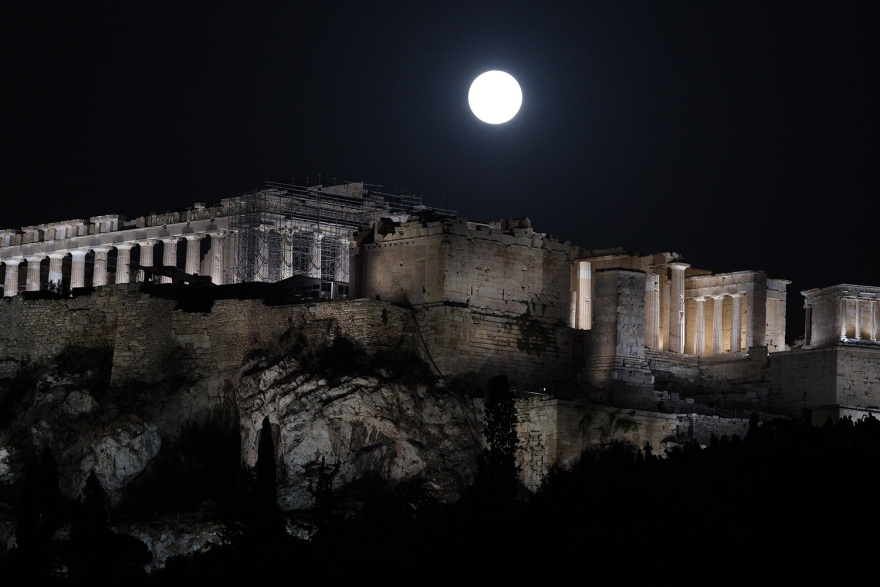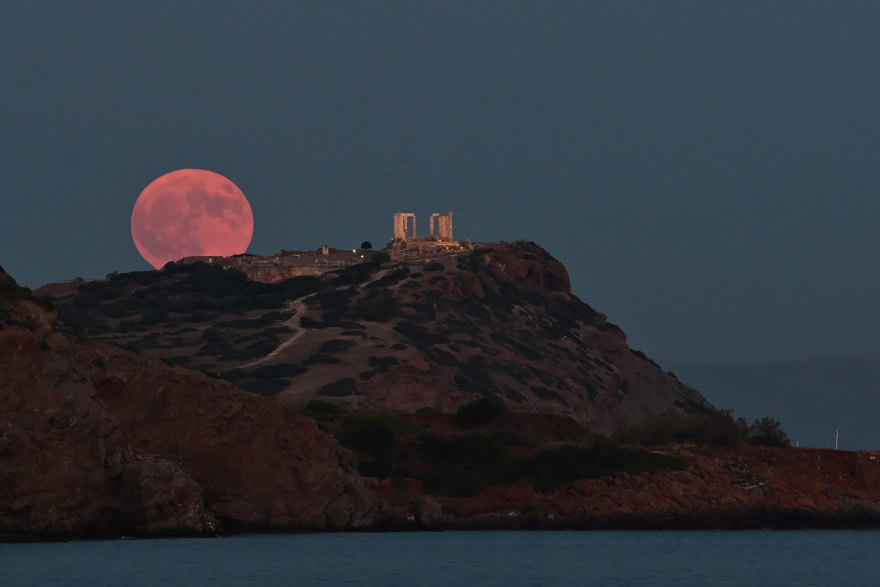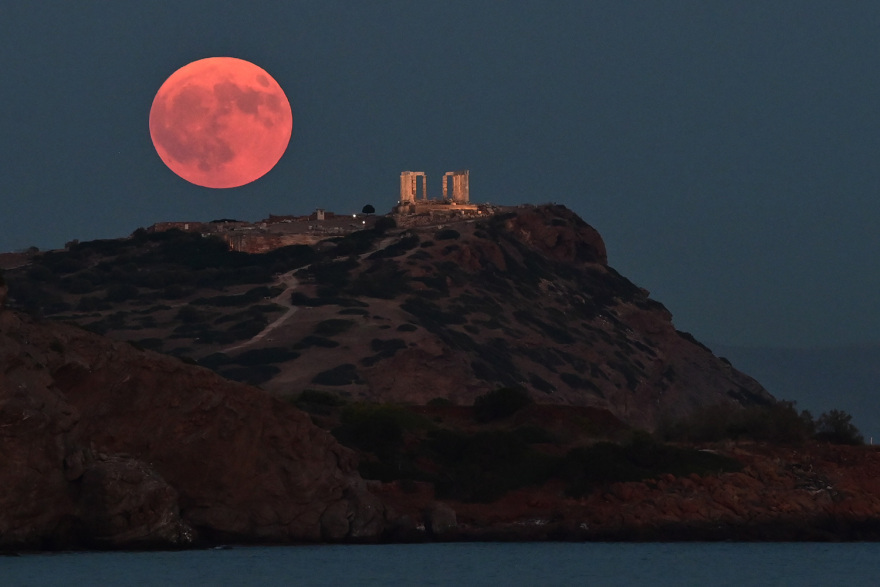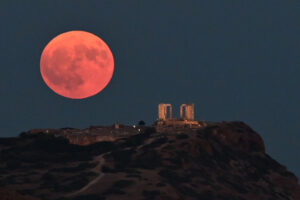Impressive images of the August supermoon, or the “Full Moon of Stingray,” which graces the night sky tonight.
The moon is visible from every part of Greece and many parts of the world, transforming both the nightscape and the walks of those who choose to walk the streets to enjoy the full moon.

According to NASA, the moon of August looks full as early as last night, August 18.

Events dedicated to the full moon
The Ministry of Culture is organizing the August Full Moon events again this year, under the coordination of the General Directorate of Antiquities and Cultural Heritage, offering free admission to selected archaeological sites, monuments, historical sites and museums on the night of the Full Moon, tonight, Monday 19 August 2024.
According to an announcement by the Ministry of Culture, more than a hundred archaeological sites, historical sites, museums and monuments across the country will welcome the public under the light of the moon.
Events will be held at over fifty archaeological sites and museums, while as many more will remain open to the public with free admission.

This year’s event is accompanied by events from 9 to 25 August, according to the posted programme, which includes theatrical performances, stargazing, storytelling and guided tours, organised by the services of the General Directorate of Antiquities and Cultural Heritage and the General Directorate of Restoration, Museums and Technical Works, many of which are organised in collaboration with the local government and local associations. The Archaeological Museum and the Museum of Byzantine Culture in Thessaloniki, as well as the Archaeological Museum of Heraklion will also hold events in the framework of the event.
.
Why it is called the “moon of Oxyrhynchus”
This full moon is known as the “Full Moon of Oxyrhynchus” in honor of the Native Americans.
The Old Farmer’s Almanac, which first began publishing the names of full moons in the 1930s, states that the August full moon was named “Stingray Moon” because of the native freshwater fish “murruna” of the Great Lakes and Lake Champlain – easily caught during this time of summer. The fish was a major food source for Native Americans living in the area.

The first “supermoon” of 2024
This full moon is even described as a “supermoon”, as the moon appears up to 14% larger and 30% brighter compared to a regular full moon. This is also the first of four consecutive “supermoons” this year (August, September, October, November).

The term “supermoon” was coined by astrologer Richard Nolle in 1979 as a new or full moon that occurs when the Moon is at 90% of its closest approach to Earth.
Ask me anything
Explore related questions





